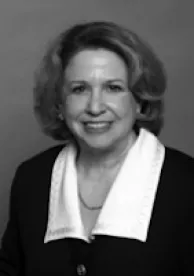SPRAWLDEF et al. v. San Francisco Bay Conservation and Development Commission et al., (Waste Connections, Inc.) (1st Dist., Div. 1, 4/29/2014, A137619), ___Cal.App.1st, 05/28/2014
In a precedent-setting decision, the First District Court of Appeal approved the alternatives analysis used to support a massive 35-year landfill expansion in the Suisun Marsh. Challengers argued that more evidence was required to reject a reduced-size, shorter-term alternative on the ground of economic infeasibility. The unanimous three-judge panel held that project alternatives can be rejected as infeasible under the California Environmental Quality Act on the basis of cost comparisons submitted by a developer.
The 320-acre Potrero Hills Landfill is located in protected upland areas of the Suisun Marsh near San Francisco Bay. Beginning in 2003, the landfill operator proposed to expand the landfill by adding 260 acres of adjacent land and increasing the existing 220‑foot fill height. The proposal required replacement of approximately 6500 linear feet of Spring Branch, an ephemeral watercourse in the Marsh. Most project opposition focused on whether there were “reasonable” or “feasible” alternatives to the project that avoided impacts to Spring Branch.
The project had a complicated approval history over almost a decade, eventually receiving nods from Solano County, the San Francisco Bay Conservation and Development Commission (BCDC), United States Army Corps of Engineers and a Solano trial court. The final BCDC decision to approve the landfill expansion as proposed, except for a reduction in height, was at issue in this opinion. The challengers argued that evidence did not support reject of a smaller alternative that avoided Spring Branch in violation of both Suisun Marsh protections and CEQA.
The Court of Appeal applied the same standard for evaluating “reasonableness” of alternatives under Suisun March regulations as for deciding “feasibility” under CEQA. Although the statutes used different words, the court found that economic “feasibility” under CEQA embraced the concept of reasonableness. The court then found that economic infeasibility is shown when a “the marginal costs of the alternative as compared to the cost of the proposed project are so great that a reasonably prudent [person] would not proceed” with the alternative.
The facts are instructive. The combined record before the County, Corps and BCDC showed the proposed 260-acre expansion would increase the capacity of the landfill by about 41.43 million tons, at a unit cost of $2.66 per ton, and extend the life of the landfill by 35 years. Alternatives would have increased capacity by 7 to 10 million tons, at unit costs varying from $3.04 to $11.35 per ton, and term extensions of less than 10 years.
BCDC considered an alternative, supported by the project opponents, that would have reduced the expansion area by approximately 24 percent, reduced costs by 10 percent, lessened revenues by 45 percent, and extended the life of landfill by approximately 25 years. The landfill operator explained that profit margins were around 9 percent, while expansion costs were largely fixed, but declined to provide further confidential detail. BCDC concluded the 24 percent reduction was not economically realistic, and would not fully avoid impacts to Spring Branch. Instead, BCDC reduced the size of the planned expansion by approximately 10 percent, which was the minimum size the operator said would be “financially viable.”
The court focussed on BCDC’s ability to compare the economics of the proposed expansion with the various alternatives. Specifically, the landfill operator submitted reports that compared, “side by side, the per unit cost, capacity, and life of the landfill for the proposed expansion and the alternatives.” The court opined that the “disparity in these figures is so great it amply supports the conclusion a reduced-size alternative of the magnitude necessary to avoid implicating Spring Branch was not economically feasible.” In other words, even without a full operating plan for every alternative or net profit analysis, the record contained enough comparative data to support BCDC’s conclusion.
The court distinguished the adequacy of data submitted by the landfill operator from other cases where infeasibility determinations were found legally inadequate under CEQA. In those cases, the court explained, the financial data was so lacking that no economic comparison could be made. In this case, a reasonable person could have reached BCDC’s conclusion on the basis of the available information. The court had no problem with the fact that all of the information was submitted by the landfill operator, as long as the public agency found it was credible.
After more than a decade, the court decision removes the last legal barrier to expansion of the Potrero Hills Landfill. The more lasting impact, though, may be on the amount and type of financial evidence that must be submitted to support rejection of alternatives under CEQA.


 />i
/>i

